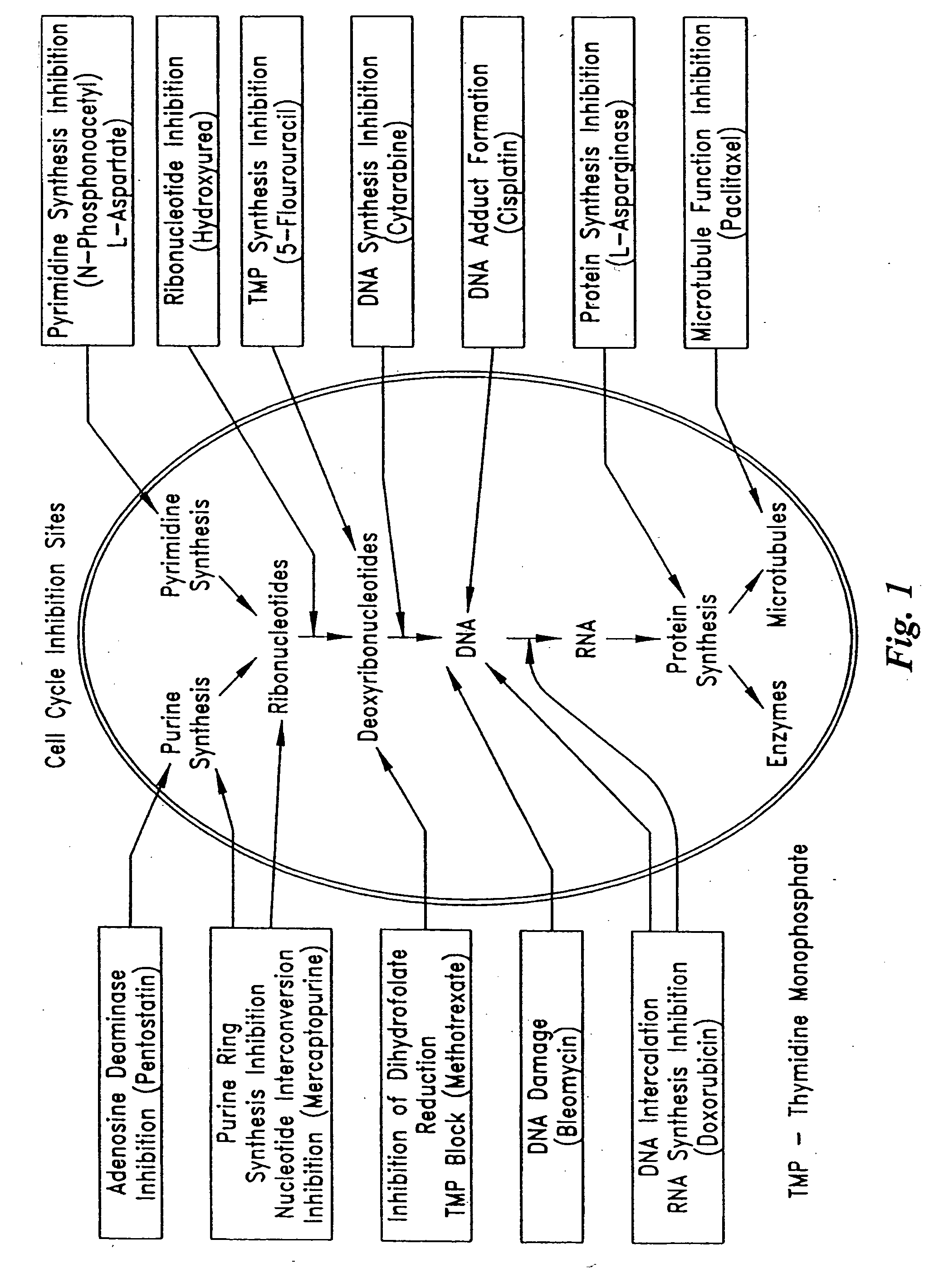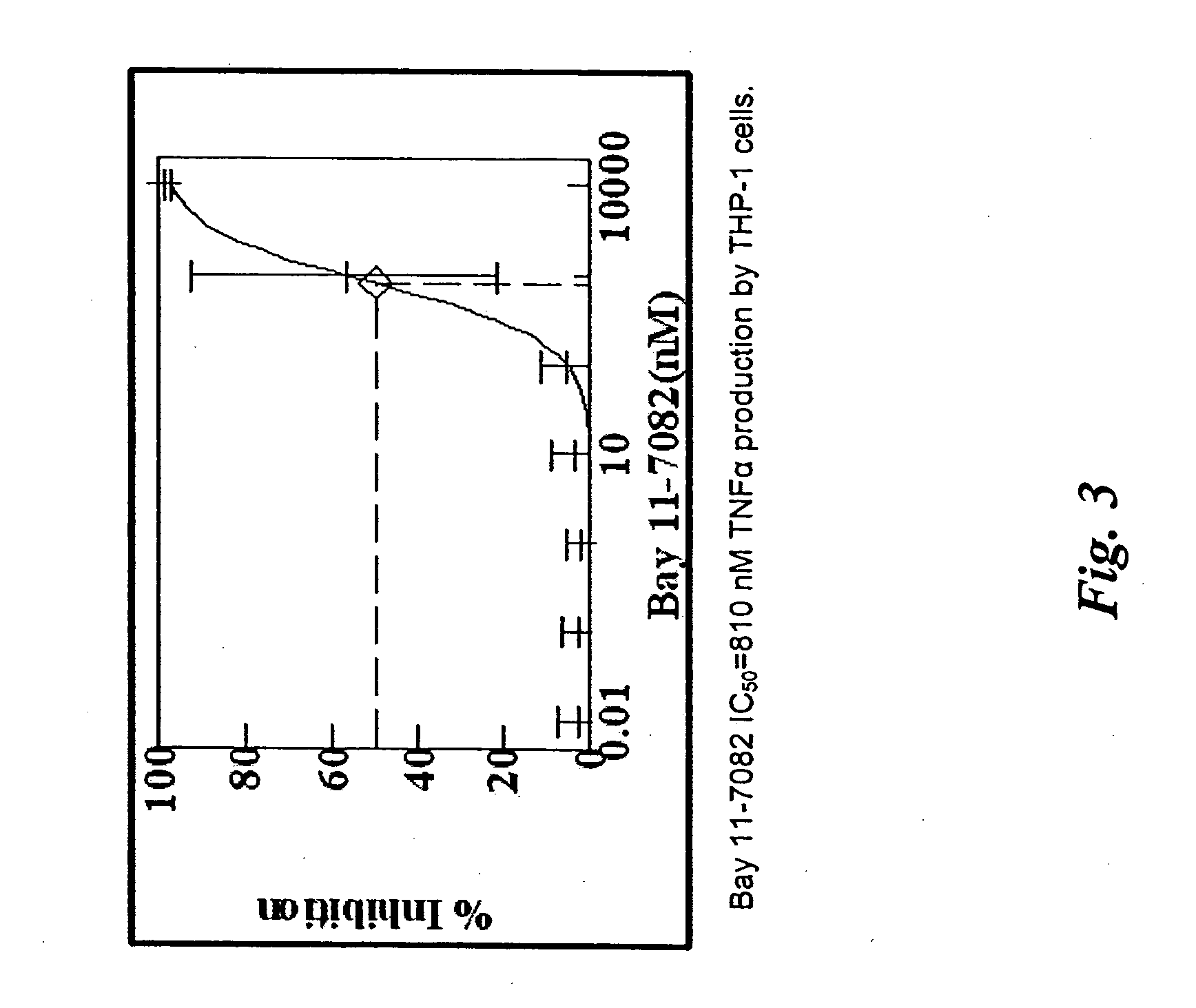Soft tissue implants and anti-scarring agents
a soft tissue and anti-scarring technology, applied in the field of soft tissue implants, can solve the problems of encapsulation of surgical implants, affecting the function of implants, and affecting the recovery of breasts, etc., to achieve superior clinical results, normal implant function, and reduce excessive scarring and fibrous tissue accumulation.
- Summary
- Abstract
- Description
- Claims
- Application Information
AI Technical Summary
Benefits of technology
Problems solved by technology
Method used
Image
Examples
example 1
Drug-Loading a Porous Facial Implant—Paclitaxel Dipping
[0848] 100 ml solutions of paclitaxel are prepared by weighing in 10 mg, 50 mg, 100 mg, 200 mg, 500 mg, 750 mg, 1000 mg, 2000 mg, and 5000 mg paclitaxel into a 250 ml glass jar with a TEFLON lined lid respectively and then adding 100 ml HPLC grade methanol. The solutions are gently shaken on an orbital shaker for 1 hour at room temperature. A porous high density poly(ethylene) facial implant (Design M Malar Implant, Cat # 9509, Porex Corporation) is placed into each of the paclitaxel solutions. After about 2 hours, the implant is removed from the solution, gently shaken and is allowed to air dry for 6 hours. The implant is further dried under vacuum for 24 hours. In additional examples, one of the following exemplary compounds may be used in lieu of paclitaxel: rapamycin, everolimus, pimecrolimus, mithramycin, and halifuginone.
example 2
Drug-Loading a Porous Facial Implant—Paclitaxel / Water-Soluble Polymer: Dipping
[0849] Nine samples of a MePEG(2000PDLLA (60:40) diblock copolymer solution are prepared by dissolving 10 g MePEG(2000)-PDLLA (60:40) diblock copolymer in 100 ml HPLC grade acetonitrile in 250 ml glass jars that have TEFLON lined lids. The solutions are rolled on a roller mill until all the polymer is dissolved. 10 mg, 50 mg, 100 mg, 200 mg, 500 mg, 750 mg, 1000 mg, 2000 mg, and 5000 mg paclitaxel are weighed into each polymer solution respectively. A magnetic stir bar is added to each solution and the solutions are stirred for 1 hour at room temperature. A porous high density poly(ethylene) facial implant (Design M Malar Implant, Cat # 9509, Porex Corporation) is placed into each of the paclitaxel solutions. After about 2 hours, the implant is removed from the solution, gently shaken and allowed to air dry for 6 hour. The implant is further dried under vacuum for 24 hours. In additional examples, one of ...
example 3
Drug-Loading a Porous Facial Implant—Paclitaxel / Degradable Polymer: Dipping
[0850] Nine samples of a poly(D,L-lactide-co-glycolide) (PLG) polymer (50:50, IV=0.25, Birmingham Polymers, Inc) solution are prepared by dissolving 10 g PLG copolymer in 100 ml ethyl acetate in 250 ml glass jars that have TEFLON lined lids. The solutions are rolled on a roller mill until all the polymer is dissolved. 10 mg, 50 mg, 100 mg, 200 mg, 500 mg, 750 mg, 1000 mg, 2000 mg, and 5000 mg paclitaxel are weighed into each polymer solution, respectively. A magnetic stir bar is added to each solution and the solutions are stirred for 1 hour at room temperature. A porous high density poly(ethylene) facial implant (Design M Malar Implant, Cat # 9509, Porex Corporation) is placed into each of the paclitaxel solutions. After about 2 hours, the implant is removed from the solution, gently shaken and is allowed to air dry for 6 hour. The implant is further dried under vacuum for 24 hours. In additional examples, ...
PUM
| Property | Measurement | Unit |
|---|---|---|
| adhesion | aaaaa | aaaaa |
| extracellular matrix breakdown | aaaaa | aaaaa |
| deposition | aaaaa | aaaaa |
Abstract
Description
Claims
Application Information
 Login to View More
Login to View More - R&D
- Intellectual Property
- Life Sciences
- Materials
- Tech Scout
- Unparalleled Data Quality
- Higher Quality Content
- 60% Fewer Hallucinations
Browse by: Latest US Patents, China's latest patents, Technical Efficacy Thesaurus, Application Domain, Technology Topic, Popular Technical Reports.
© 2025 PatSnap. All rights reserved.Legal|Privacy policy|Modern Slavery Act Transparency Statement|Sitemap|About US| Contact US: help@patsnap.com



